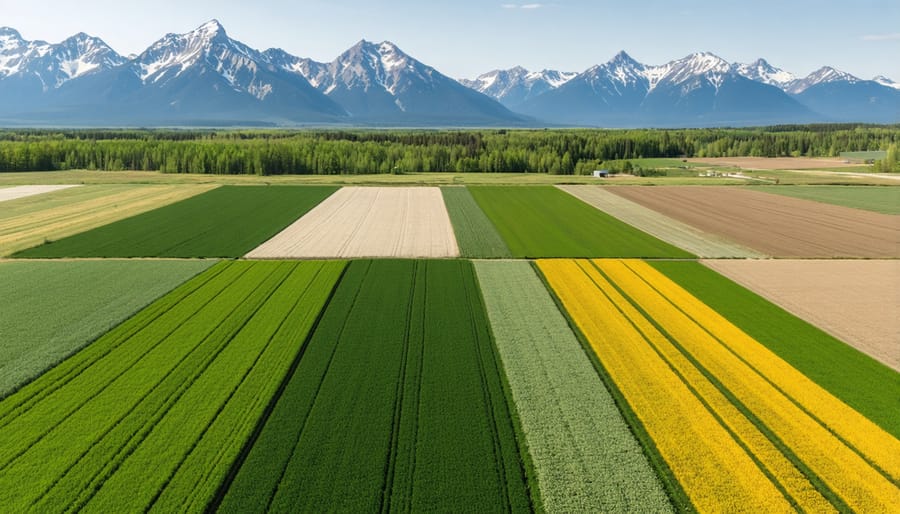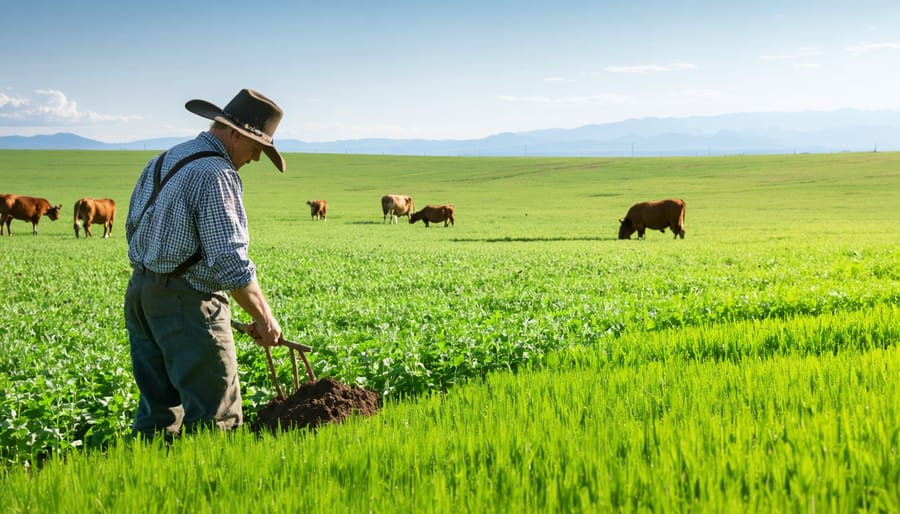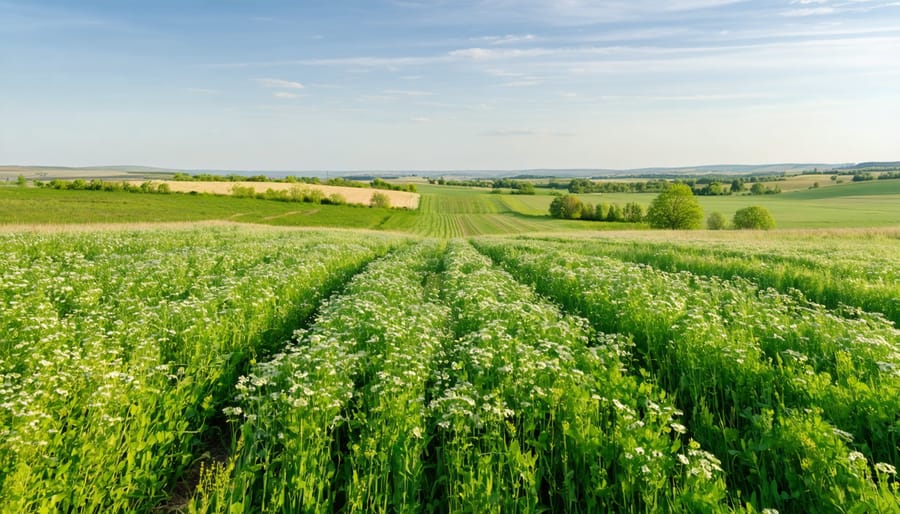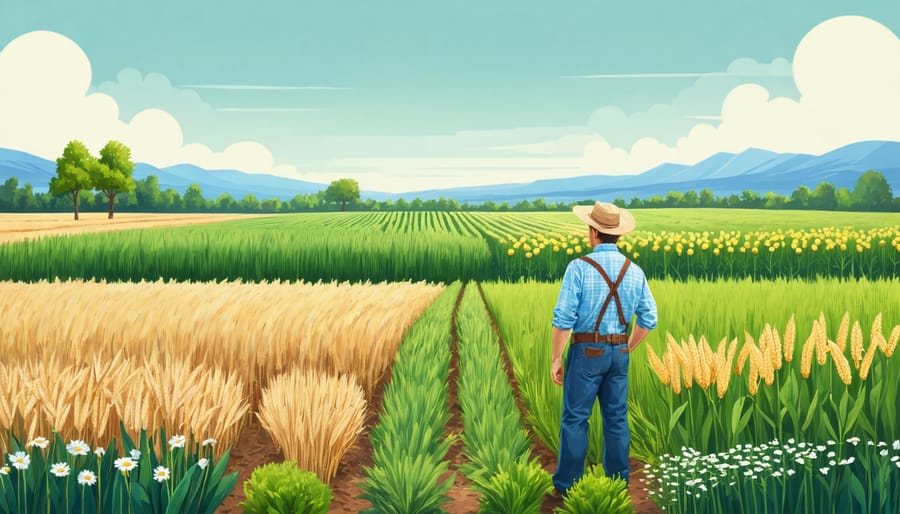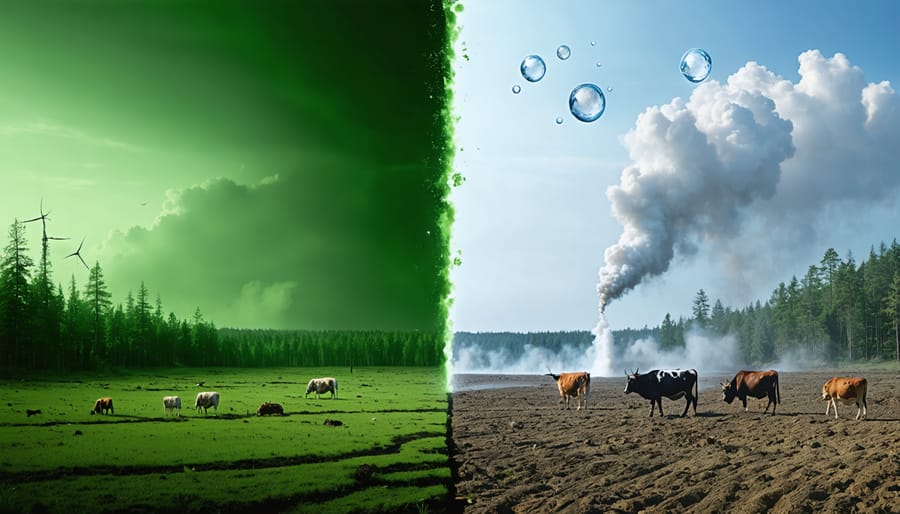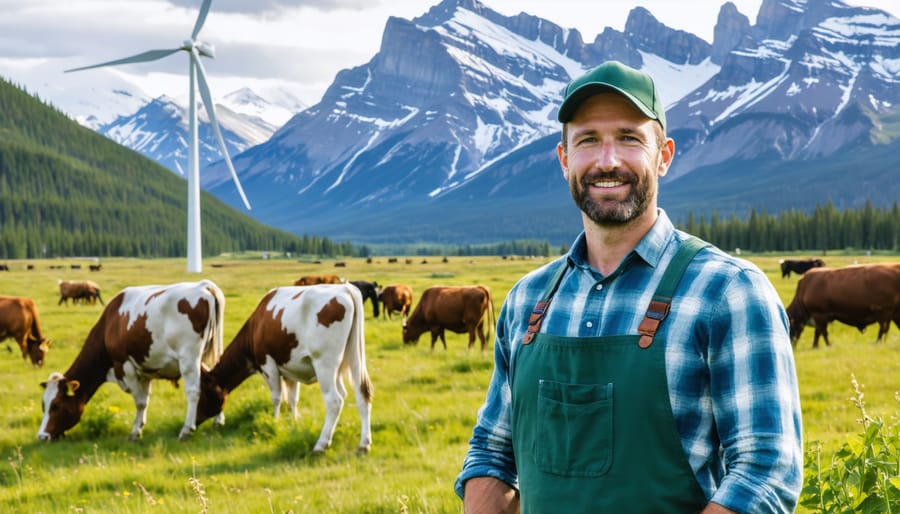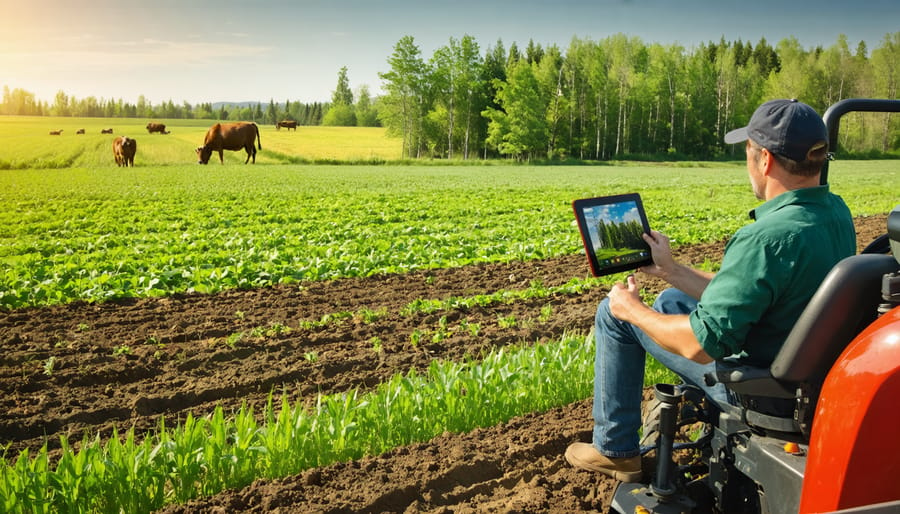Alberta’s environment is at a critical juncture. Decades of oil and gas development, agricultural expansion, and urban sprawl have taken a heavy toll on the province’s natural ecosystems. Wetlands have been drained, forests fragmented, and grasslands plowed under. Species are disappearing at an alarming rate as habitat loss, pollution, and climate change threaten their survival.
Yet amidst this environmental crisis, there is reason for hope. A growing movement of Albertans are standing up to protect the wild spaces and creatures they cherish. Indigenous communities are reclaiming their role as stewards of the land. Farmers are adopting regenerative practices that rebuild soil health. Citizen scientists are documenting at-risk species to aid conservation efforts.
This issue explores the many facets of “environmental Alberta” – the challenges we face, the progress being made, and the path forward. Through inspiring stories and expert insights, it charts a course toward a future where the needs of both people and planet are met. One where Alberta’s majestic landscapes and vibrant biodiversity aren’t just protected, but actively restored and regenerated.
The stakes could not be higher. How we collectively rise to this moment will shape the Alberta we pass on to future generations. The articles ahead light the way. Now it’s up to all of us to act, before it’s too late.
Harnessing the Power of Regenerative Farming
Cover Cropping for Healthier Soil
Cover cropping is a powerful tool for Alberta farmers looking to improve soil health and boost crop yields. By planting non-cash crops between growing seasons, cover crops protect the soil from erosion, suppress weeds, and add organic matter back into the earth. This practice is a key component of regenerative farming practices that prioritize soil health and long-term sustainability.
To get started with cover cropping, first identify your goals and select appropriate cover crop species. Common options for Alberta include clover, alfalfa, and cereal rye. Next, determine the best planting method and timing for your operation. Many farmers use a no-till drill to seed cover crops directly into crop residue, while others broadcast seed and lightly incorporate it with a harrow.
Once established, manage cover crops to maximize their benefits. This may involve mowing, grazing, or terminating growth at the appropriate time. By incorporating cover crops into your rotation, you’ll see improvements in soil structure, fertility, and water-holding capacity. Plus, you’ll be doing your part to protect Alberta’s agricultural land for generations to come.
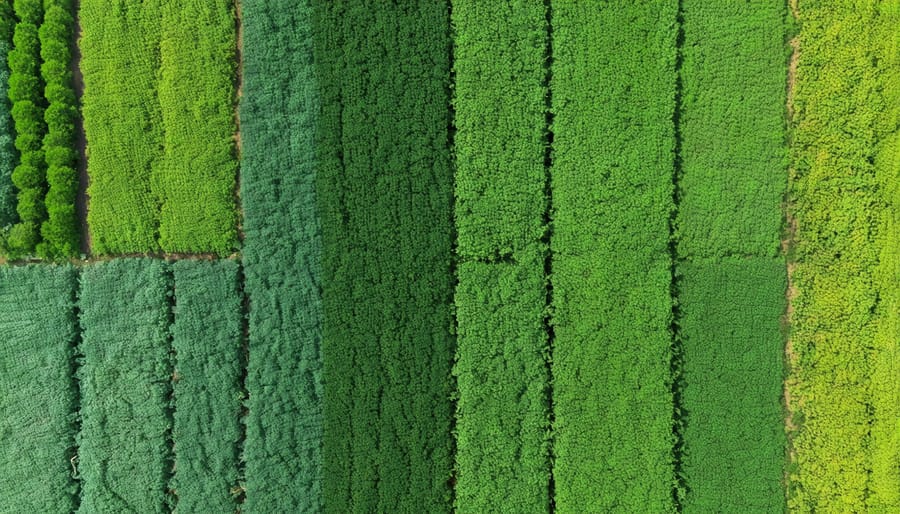
Rotational Grazing: A Win-Win for Livestock and Land
Rotational grazing, a practice where livestock are strategically moved between pastures, has emerged as a win-win solution for both animals and the land in Alberta. By allowing pastures to rest and recover between grazing periods, this method promotes healthier grass growth, reduces soil erosion, and enhances biodiversity. “Since implementing rotational grazing on our ranch, we’ve seen a significant improvement in the quality and resilience of our pastures,” shares John Smith, a local rancher near Edmonton. “The cattle also benefit from access to fresh, nutrient-rich forage, which translates to better weight gain and overall health.” Smith explains that by closely monitoring pasture conditions and adjusting grazing schedules accordingly, ranchers can optimize both animal performance and land stewardship. This sustainable approach not only benefits individual operations but also contributes to the long-term vitality of Alberta’s agricultural communities. As more ranchers adopt rotational grazing, the collective impact on the province’s grasslands and watersheds could be transformative. With proper management and support, this practice has the potential to become a cornerstone of environmentally conscious livestock production in Alberta.
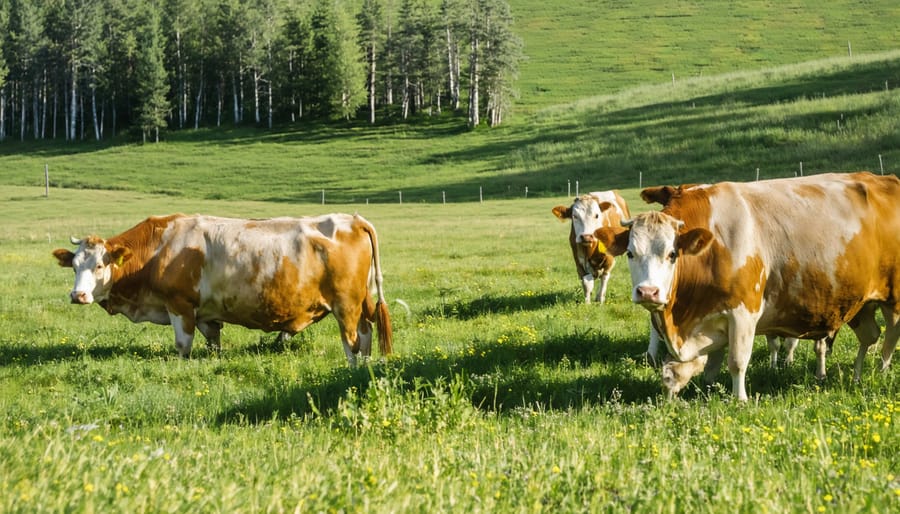

Precision Agriculture: Doing More with Less
Precision agriculture is revolutionizing the way Alberta farmers manage their crops and livestock, enabling them to optimize inputs, reduce waste, and improve yields. By leveraging advanced technologies such as GPS guidance systems, variable rate application, and remote sensing, farmers can collect and analyze data to make more informed decisions about planting, fertilizing, and irrigating their fields.
One example of precision agriculture in action is the use of soil mapping and variable rate fertilization. By taking detailed soil samples and creating digital maps of nutrient levels, farmers can apply fertilizer more precisely, only where it’s needed. This not only reduces costs and environmental impact but also leads to healthier, more productive crops.
Another key tool is precision livestock management, which uses sensors and tracking devices to monitor animal health, behavior, and location. This allows farmers to detect issues early, optimize feeding and grazing strategies, and improve overall herd management. The result is healthier animals, higher yields, and reduced environmental footprint.
Adopting precision agriculture practices not only benefits the environment but also makes good business sense. By reducing inputs and increasing efficiency, farmers can lower their costs and boost profitability. Many Alberta farmers are already seeing the benefits, with some reporting input cost savings of up to 20% and yield increases of 10% or more.
If you’re interested in learning more about precision agriculture or accessing funding to implement these technologies on your farm, there are many resources available. The Alberta government offers grants and support programs for farmers looking to adopt sustainable practices, while organizations like the Alberta Wheat Commission and the Alberta Pulse Growers provide education and networking opportunities.
By embracing precision agriculture, Alberta farmers can do more with less – producing high-quality food while conserving resources and protecting the environment. It’s a win-win for farmers, consumers, and the planet.
Renewable Energy on the Farm
Renewable energy is gaining traction among Alberta farmers as a sustainable and cost-effective solution for their agricultural operations. Solar and wind power offer compelling opportunities to reduce reliance on fossil fuels while generating long-term savings. The Alberta government has introduced incentives to encourage the adoption of renewable energy systems on farms, making the transition more accessible and affordable.
Installing solar panels on farm buildings, such as barns and workshops, can significantly offset electricity costs. With Alberta’s abundant sunshine, solar energy is a reliable and low-maintenance option. Wind turbines, particularly in areas with consistent wind patterns, can also contribute to meeting a farm’s energy needs. By harnessing these natural resources, farmers can reduce their carbon footprint and enhance their energy independence.
Beyond the environmental benefits, investing in renewable energy can lead to substantial cost savings over time. While initial installation costs may be a consideration, government grants and financing options can help mitigate upfront expenses. As energy prices continue to rise, generating one’s own clean electricity becomes an increasingly attractive prospect for long-term financial stability.
Alberta farmers who have already embraced renewable energy report positive experiences. They appreciate the reduced exposure to fluctuating energy prices and the satisfaction of contributing to a greener future. As more agricultural communities adopt these practices, knowledge sharing and support networks are growing, making the transition to renewable energy more achievable than ever before.
By exploring solar and wind power options, Alberta farmers can take a proactive step towards sustainable agriculture while reaping the economic benefits. With government support and a growing community of adopters, now is an opportune time for farmers to consider integrating renewable energy into their operations and paving the way for a more resilient and environmentally responsible agricultural sector in Alberta.
Building Strong Rural Communities
Sustainable agriculture plays a vital role in fostering strong, vibrant rural communities across Alberta. By adopting environmentally-friendly practices, farmers not only protect the land they rely on but also create opportunities for collaboration and innovation. In rural Alberta, farmers are coming together to share knowledge, resources, and ideas to build a more sustainable future for their communities.
One shining example of this collaborative spirit can be found in the story of the Stettler County Agricultural Sustainability Initiative. In this tight-knit farming community, a group of forward-thinking producers joined forces to explore new ways of reducing their environmental impact while maintaining profitable operations. Through regular meetings, field days, and online forums, these farmers have been able to learn from each other’s successes and challenges, ultimately developing a shared vision for sustainable agriculture in their region.
Similar stories of cooperation and innovation can be found throughout rural Alberta. From the Flagstaff County Regenerative Agriculture Network to the Camrose County Soil Health Alliance, farmers are recognizing the power of working together to achieve their sustainability goals. By pooling their expertise and resources, these communities are not only improving their own operations but also setting an example for others to follow.
The benefits of sustainable agriculture extend far beyond the farm gate. By adopting practices that conserve soil, protect water resources, and promote biodiversity, farmers are helping to ensure the long-term health and resilience of their communities. Sustainable farms can also create new economic opportunities, such as agri-tourism, value-added processing, and direct marketing, which help to diversify and strengthen rural economies.
As more and more Alberta farmers embrace sustainable practices, the future of our rural communities looks brighter than ever. By working together and learning from each other, these dedicated stewards of the land are building a legacy of environmental responsibility and community resilience that will benefit generations to come.
Partnering for a Greener Future
Alberta’s farmers are at the forefront of developing innovative, sustainable agriculture practices. By forging partnerships with researchers and environmental organizations, they are working towards common goals of reducing environmental impact, conserving resources, and building resilient agricultural communities.
One such example is the collaboration between the University of Alberta and local producers to study the benefits of cover cropping and reduced tillage. By sharing knowledge and resources, farmers are able to implement these soil health strategies more effectively.
The Organic Agriculture Centre of Canada also works closely with Alberta growers transitioning to organic production methods. Through field days, workshops and one-on-one mentoring, farmers gain the skills and support network needed to succeed with organic practices.
Conservation groups like Ducks Unlimited Canada recognize the vital role farmers play in preserving wetlands and wildlife habitat. Their Revolving Land Conservation Program helps producers protect sensitive areas while still maintaining viable farm operations.
These are just a few instances of the exciting collaborations happening across the province. By working together, Alberta’s agricultural and environmental communities are finding practical, science-based solutions to sustainability challenges.
As an Albertan farmer, you too can be part of this growing movement. Reach out to local extension specialists, researchers or conservation organizations to learn more. Attend field tours and workshops to see sustainable practices in action. Join farmer networks to share your own experiences and learn from others. Together, we can build a greener future for agriculture in Alberta.
Conclusion
Alberta’s agricultural community has an unprecedented opportunity to lead the way in sustainable farming practices. By embracing strategies like conservation tillage, crop rotation, precision agriculture, and regenerative grazing, farmers can not only reduce their environmental impact but also enhance soil health, boost yields, and improve their bottom line. The examples shared throughout this article demonstrate that these practices are not only feasible but highly effective in the Alberta context.
However, the journey towards sustainability is not one that farmers must take alone. Collaboration, knowledge sharing, and support from industry organizations, government, and consumers are essential to driving widespread adoption. As more farmers witness the successes of their peers and feel empowered to make changes on their own land, a ripple effect of positive transformation can spread across the province.
The potential benefits extend far beyond individual farms. By collectively prioritizing environmental stewardship, Alberta’s agricultural sector can contribute to cleaner air and water, more resilient ecosystems, and a more stable climate for future generations. Moreover, by positioning itself as a leader in sustainable agriculture, Alberta can strengthen its competitive advantage and tap into growing consumer demand for responsibly produced food.
The time to act is now. Every farmer, no matter the size of their operation, has a vital role to play in building a more sustainable future for Alberta agriculture. By starting small, learning from others, and continually adapting, farmers can unlock the full potential of their land while safeguarding the environment. Together, Alberta’s agricultural community can cultivate a legacy of stewardship, resilience, and abundance for generations to come.

